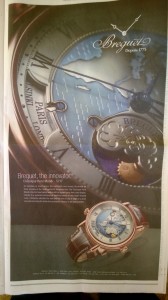Revenue is Kinger.
HP’s earnings were higher than expected this quarter, but revenue was down. Contemporaneously, Silicon Valley is celebrating the smartest kids in business (I don’t know their names) owners of Snapchat who just turned down $3B from Facebook — and they have no revenue model.
For all the expense cutting Meg Whitman has done at HP — for all the business blocking and tackling — it should be known that revenue in 5 of 6 business segment is down. Not good.
In this age of “content is king,” I’d like to go off piste and say “revenue is king.” Business process reengineering, the cloud, social business design and the maker economy are the things of Harvard Business Review essays and B+ papers. But revenue is what business is built upon. Let me say it again, revenue is the thing upon which businesses are built. Top line dollars.
Follow the revenue in the 21st century. When someone opens their wallet, marketing has happened. When someone opens their wallet learning can take place. Metrics can take place.
Ms. Whitman needs to be chasing revenue growth. Period. Let her direct reports work the expense side. Peace.


